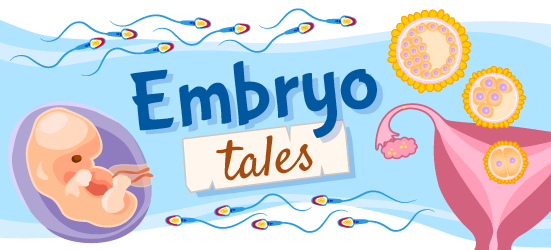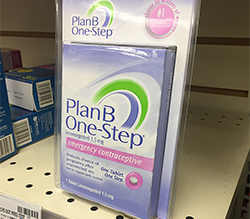
Preventing Pregnancy with Plan B
Illustrated by: Sabine Deviche

When you get ready to ride your bike, you probably do a couple of things to keep yourself safe. You wear a helmet and maybe some knee and elbow pads so that if you fall off your bike, you won’t get hurt. But what happens if you forget your helmet, or your pads fall off? They won’t provide much protection after you’ve already fallen. What if there was a way to protect yourself from getting any injuries right after you fell?
Plan B, a set of emergency birth control pills, works to prevent pregnancy after sexual intercourse happens. Birth control, or contraception, is a type of protection that keeps a person from getting pregnant.
Most types of contraception work best before sex. But, a person with a uterus can take Plan B up to 72 hours after sex to try to protect against pregnancy if their first form of protection failed in some way.
Powerful Pills

So, what is Plan B, and how does it differ from other types of contraceptives?
Plan B usually consists of two pills with the hormone levonorgestrel. This hormone is a lab-made form of progesterone, a natural hormone in the body. Progesterone plays a key role in the female reproductive system. A sharp drop in progesterone at the end of the menstrual cycle triggers a period.
During the menstrual cycle, the female reproductive system gets ready for a pregnancy. The hormones in Plan B can disrupt the menstrual cycle at various points to prevent pregnancy.
Comparing Contraceptives

Different types of birth control work in different ways. Some contraceptives create a barrier during intercourse to stop a sperm from reaching an egg. For example, a condom is a physical barrier that keeps sperm from entering the body.
Hormonal contraceptives like daily birth control pills prevent ovulation so that sperm will not fuse with an egg. Plan B uses hormones in a similar way.
Why Plan B?
Scientists know that Plan B works because of the hormones it contains. But the exact way that the hormones prevent pregnancy is not fully known. Some scientists think that the hormones work to prevent ovulation. Others think that hormones change the lining of the uterus, which makes it hard for a fertilized egg to implant.

Either way, Plan B is an effective form of birth control. It is up to 95% effective when a person takes it within 24 hours of sexual intercourse. A person can still take it between 48 and 72 hours after sex, but its effectiveness drops to about 61%. If a person takes Plan B later than 72 hours after sex, it is even less effective and is less likely to work. The longer a person waits to take Plan B, the more likely it is that a sperm is able to meet the egg and fertilize it.
Other forms of emergency contraceptive pills exist and can work for longer periods of time. Some can be effective for up to five days after sexual intercourse.
Side Effects
There are some common side effects of Plan B that should only last a few days after taking it. Some of the side effects include stomach pain or cramping, nausea and vomiting, headache, and dizziness. There can also be some bleeding in between periods or some change to a person’s typical menstrual cycle.
Aid from Animals
Did you know that a lot of knowledge about contraception comes from studies on other animals? Scientists in the 1920s first found that emergency birth control was possible through tests on other mammals, like dogs and horses. The scientists used estrogen.

Estrogen is another hormone that plays a role in the female reproductive system. The scientists gave a small dose of estrogen to the animals soon after sexual intercourse. They found that it helped prevent pregnancy. This was a big discovery for emergency birth control.
But what about for people? It wasn't until the 1960s that humans successfully used emergency birth control. At this time, doctors in the Netherlands used estrogen to stop a patient from becoming pregnant.
Finding the Formula
It took a lot of work to find the right recipe of hormones for Plan B. In the 1970s, scientists continued to work to find the most effective formula for the medication. In 1974, a scientist from Canada named Albert Yuzpe made a special mixture of estrogen and progesterone in a lab. This formula prevented pregnancies in 75% of people who took it. It is still a method used for some emergency contraceptives and other birth control as of 2021.
Back in the 1970s in Latin America, scientists were testing progestin-only forms of birth control. Plan B uses the same type of formula called levonorgestel. More recent studies have found that this formula is better at preventing pregnancy than Yuzpe’s method. The studies also found that it also has less side effects of nausea and vomiting than Yuzpe’s method.

Approving the Pills
Developing the pills was just the first difficult step. Next, they had to be approved by the government to be used widely. In the US in 1997, the Food and Drug Administration, or FDA, approved emergency birth control pills. However, people could only use the pills with a doctor’s prescription. This made it hard for patients to use the pills in the right time window after sexual intercourse.
In 2006, the FDA approved Plan B as an over-the-counter medication. This means that anyone over the age of 18 can buy the medication without a prescription. In 2013, the FDA approved for Plan B to be available for purchase over the counter to anyone of any age. That way, emergency contraception can be accessible to more people who might need it.
Silphium image by Udo Schmidt via Wikimedia Commons.
Thumbnail image of Plan B by Mike Mozart via Wikimedia Commons.
This Embryo Tale was edited by Cole Nichols and is based on the following Embryo Project articles:
Buttar, Aliya, Seward, Sheraden, "Plan B: Emergency Contraceptive Pill". Embryo Project Encyclopedia (2008-09-04). ISSN: 1940-5030 http://embryo.asu.edu/handle/10776/1944.
Ly, Sarah, "Post-Coital Oral Emergency Contraception". Embryo Project Encyclopedia (2011-03-03). ISSN: 1940-5030 http://embryo.asu.edu/handle/10776/2080.
Van Iten, Brendan, "Estrogen and the Menstrual Cycle in Humans". Embryo Project Encyclopedia (2016-06-22). ISSN: 1940-5030 http://embryo.asu.edu/handle/10776/11344.
Read more about: Preventing Pregnancy with Plan B
Bibliographic details:
- Article: Preventing Pregnancy with Plan B
- Author(s): Molly Jacobson
- Publisher: Arizona State University School of Life Sciences Ask A Biologist
- Site name: ASU - Ask A Biologist
- Date published: 18 Jul, 2022
- Date accessed:
- Link: https://askabiologist.asu.edu/embryo-tales/plan-b
APA Style
Molly Jacobson. (Mon, 07/18/2022 - 13:54). Preventing Pregnancy with Plan B. ASU - Ask A Biologist. Retrieved from https://askabiologist.asu.edu/embryo-tales/plan-b
Chicago Manual of Style
Molly Jacobson. "Preventing Pregnancy with Plan B". ASU - Ask A Biologist. 18 Jul 2022. https://askabiologist.asu.edu/embryo-tales/plan-b
Molly Jacobson. "Preventing Pregnancy with Plan B". ASU - Ask A Biologist. 18 Jul 2022. ASU - Ask A Biologist, Web. https://askabiologist.asu.edu/embryo-tales/plan-b
MLA 2017 Style

In Ancient Greece and Rome, people used a plant called silphium as a form of contraception. Silphium was also used as a seasoning, perfume, and medicine, and was so popular that people harvested it to extinction. Nowadays, no one knows what silphium actually was, other than that it had yellow flowers.
Be Part of
Ask A Biologist
By volunteering, or simply sending us feedback on the site. Scientists, teachers, writers, illustrators, and translators are all important to the program. If you are interested in helping with the website we have a Volunteers page to get the process started.
